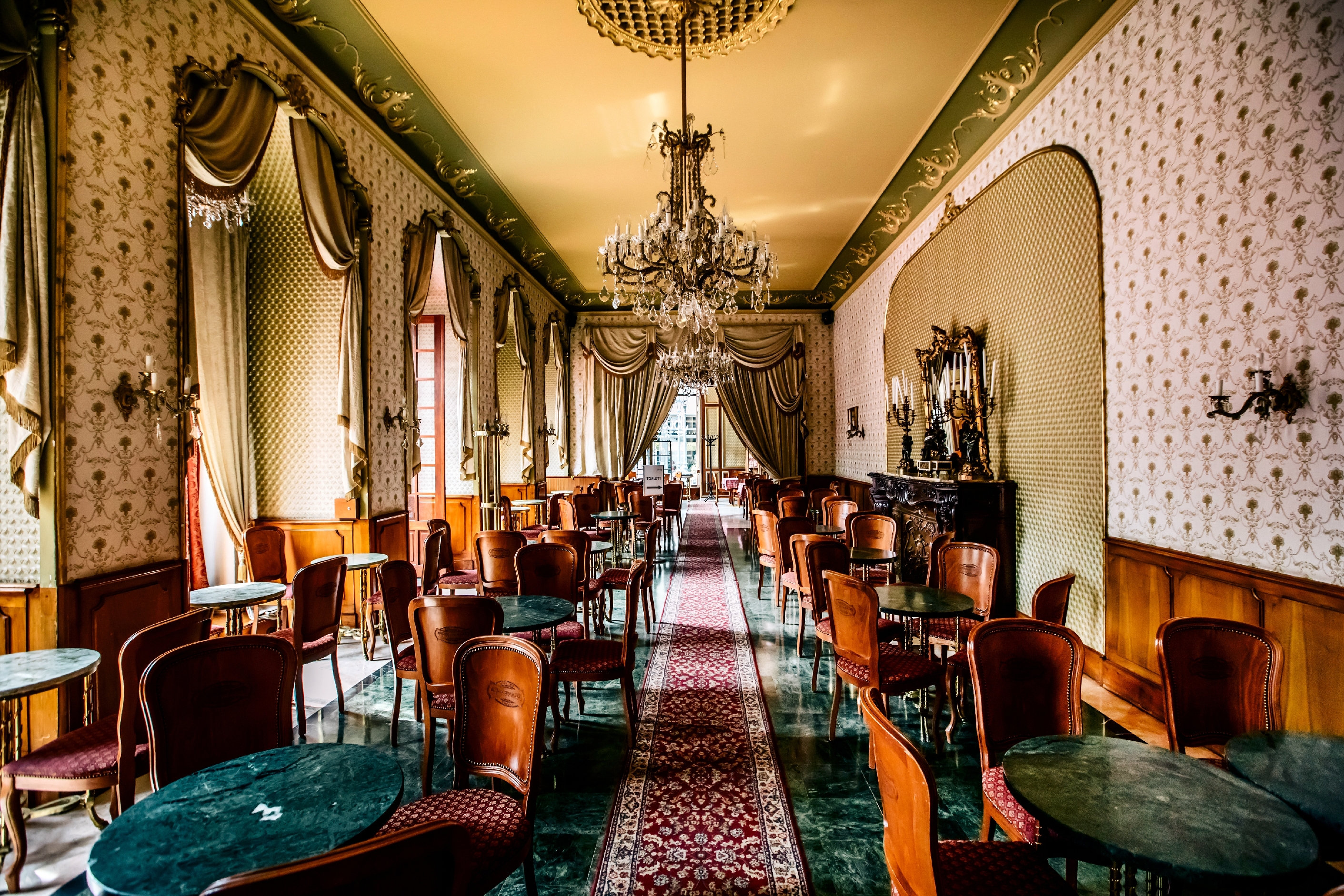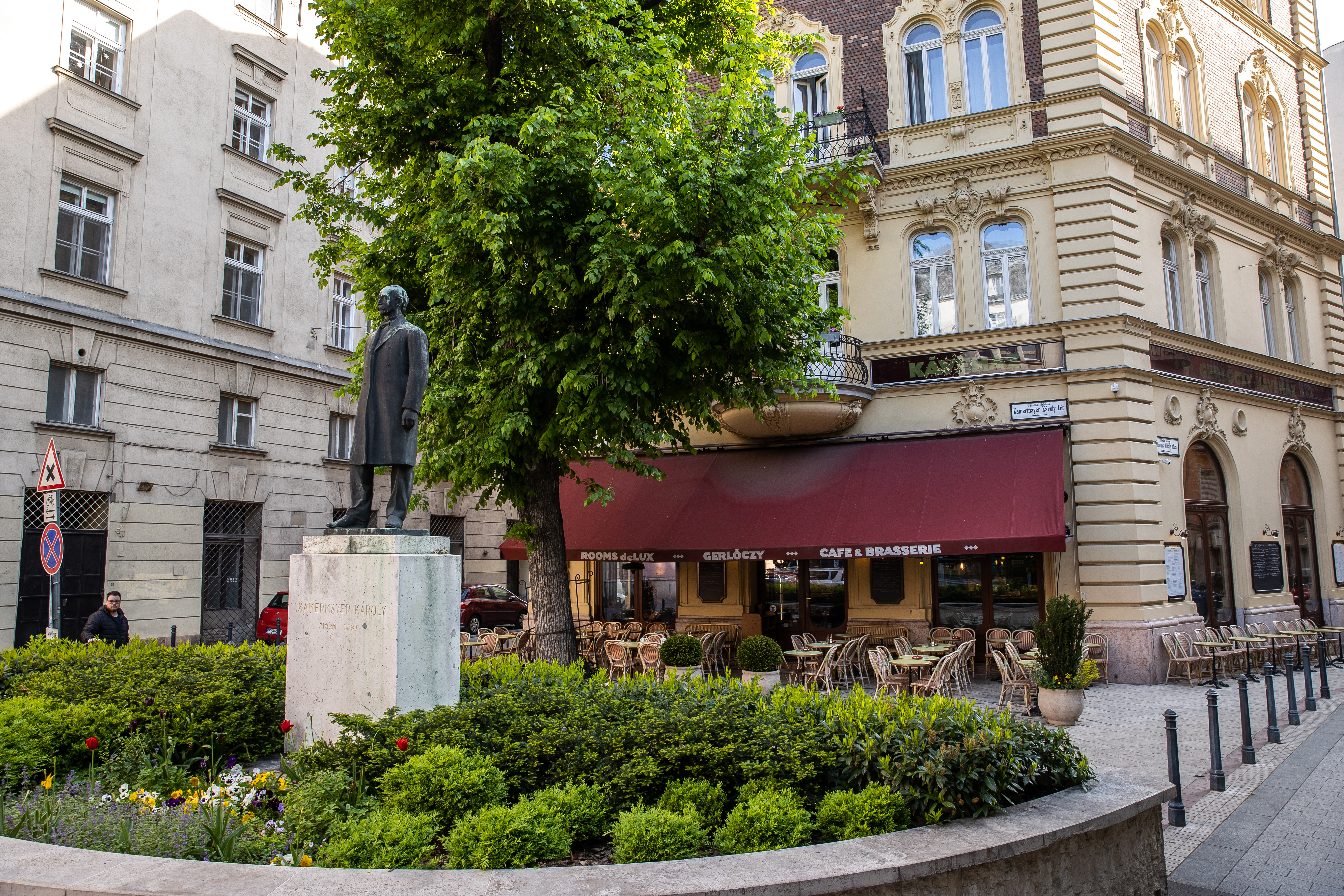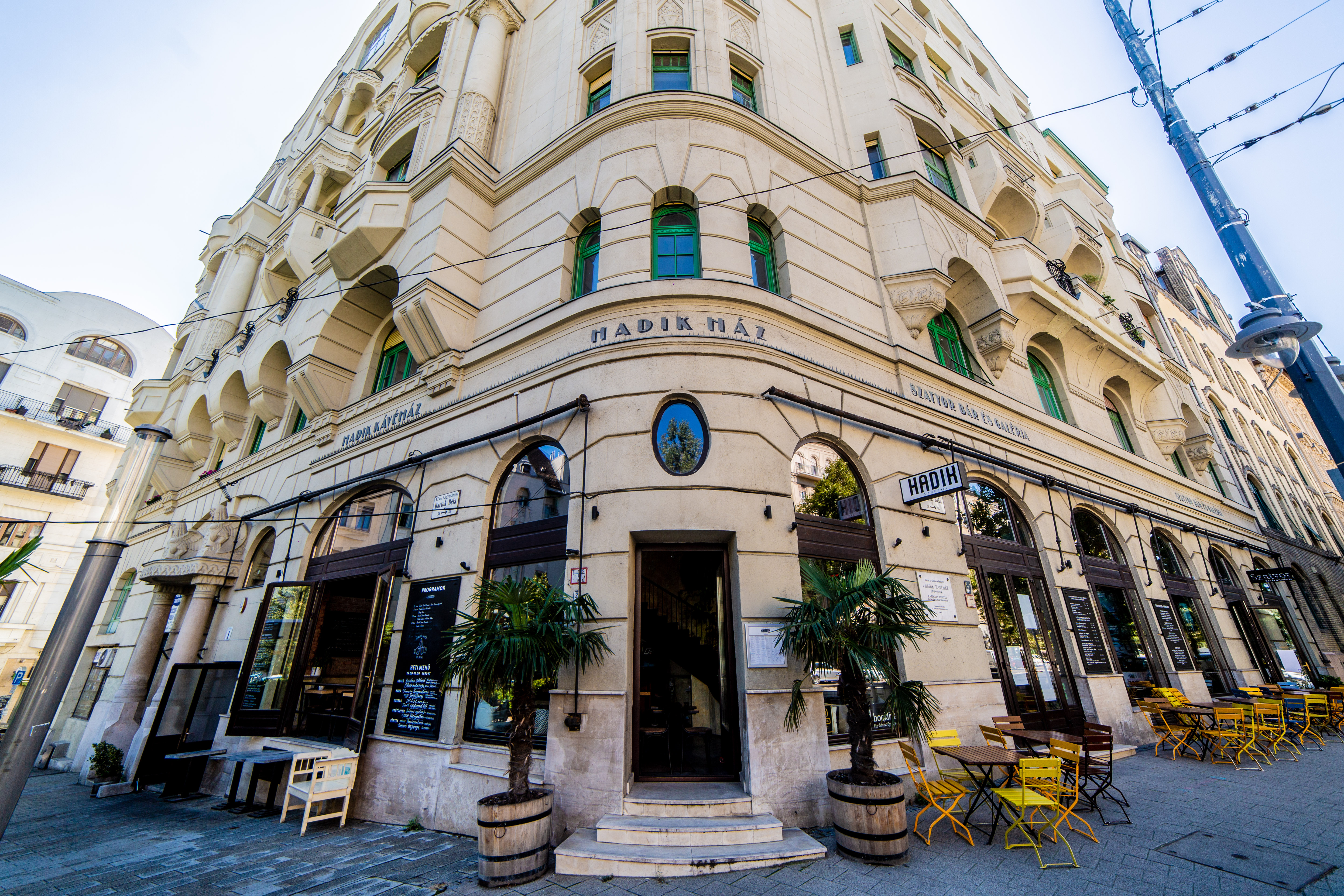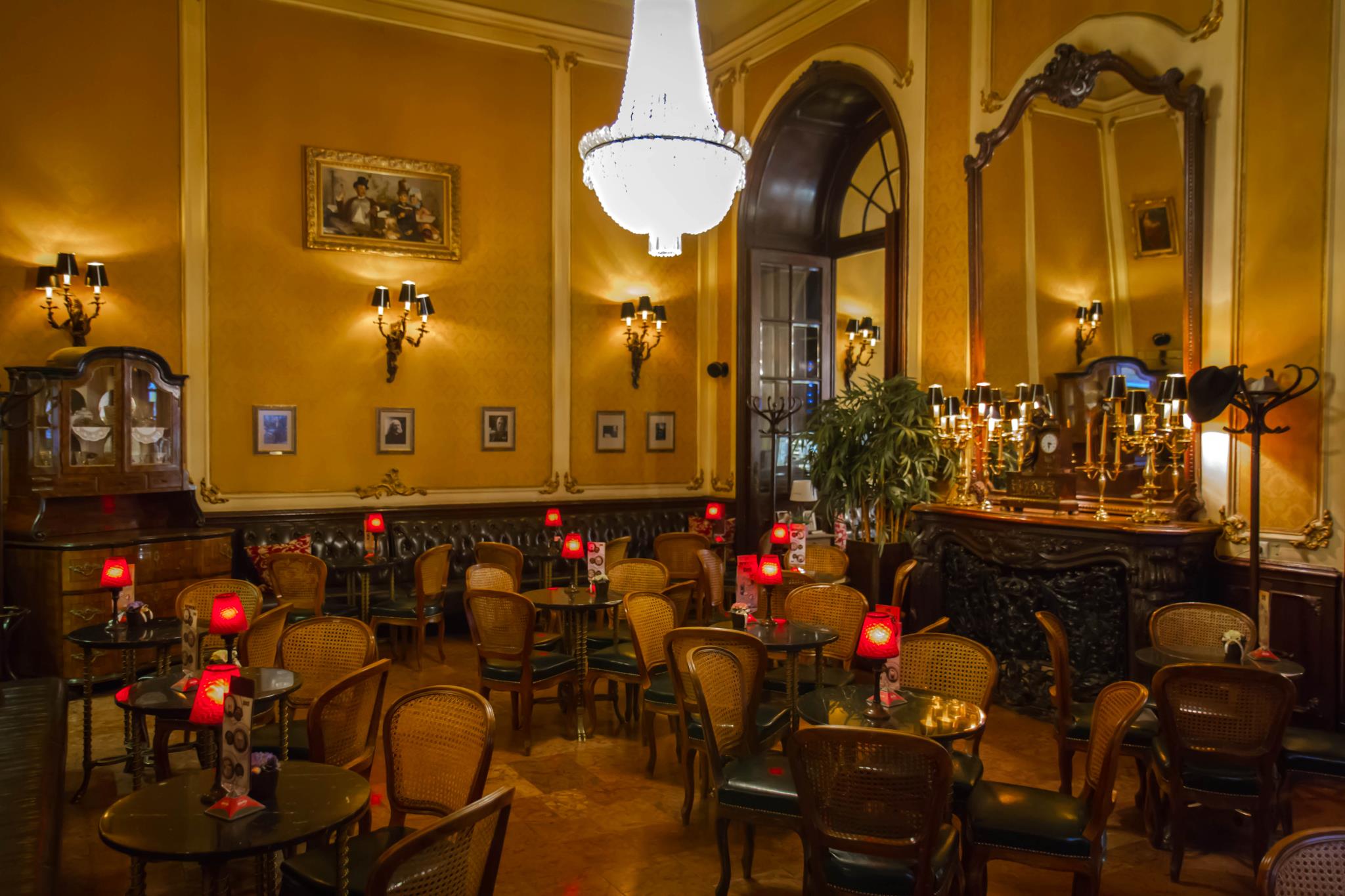Last updated: 27 December 2019
Welcome to Ultimate Budapest! In our ultimate series we list the best of Budapest, its bars and spas, its boutiques and cafés, its sights and restaurants. Regularly updated, always on the ball, this is your go-to guide for everything that’s great about this great city.
1/6
Centrál Café
The Centrál Café is one of the oldest coffeehouses in Budapest, safeguarding a prominent past but with a progressive mindset, offering an inspiring atmosphere enhanced with ample sunshine flooding through huge windows that open in summer to the pavement-seating area. At the onset of the 20th century, this huge downtown locale was a highly frequented hangout for Hungary’s literary luminaries and was a regular retreat for the editorial team of Nyugat, the most influential literary journal of the day. Many prominent writers are memorialised here with portraits decorating the classic wooden walls.
The impressive selection includes fine Hungarian dishes and international ones, while the coffee assortment is both standard and new-wave. A delicate line of desserts is also offered, with each piece made on the spot at Centrál’s own subterranean confectionery. Guests can try Hungarian sweets such as Esterházy torte (a buttercream cake made with layers of almond meringue), Dobos torte (a caramel-topped sponge cake layered with chocolate buttercream), Rákóczi túrós (a sweet cottage-cheese cake), Austrian Sacher cake, colourful French macarons or lime cheesecake. One of the house’s specialities is the Centrál Cakelet, a creamy coffee-infused mousse atop a soft sponge cake.
The Centrál also keeps tradition alive with a simple gesture; whenever a customer orders coffee, it is served with a paper placemat featuring a piece – and its English translation – by a prominent Hungarian writer who was a regular here. On the other side, you are encouraged to grab a pen and share your own literary masterpieces. Often a small card is added to the order with an eloquent description taken from a literary piece by a Hungarian writer.
Centrál Café District V. Károlyi Mihály utca 9
Open: Daily 8am-midnight
2/6
Gerbeaud Café
Located on relandscaped Vörösmarty tér, the Gerbeaud café and cake shop has more than 150 years of tradition behind it, making it one of the oldest, best-known and most prominent coffeehouses in Central Europe. The interior is decorated with gilded stucco, wood panelling, impressive chandeliers and marble counters – sampling coffee and dessert here makes you feel like a royalty. Gerbeaud was opened in 1858 by Henrik Kugler, but was made world-famous by Swiss confectioner, Emil Gerbeaud, who bought and refurbished the building in 1898.
Emil Gerbeaud's two famous and must-try inventions are the konyakos meggy, sour cherry matured in cognac and covered in dark chocolate, and the zserbó szelet, layers of sweet cake, jam and ground walnuts topped with chocolate glaze. The assortment is complete with other traditional Hungarian delicacies, as well as new-wave confections made with cutting-edge technology and, of course, mouthwatering coffee concoctions. Gerbeaud’s spacious interior is able to accommodate 330 people at one time, and in summer a terrace spreads out over this prime spot for people watching.
Gerbeaud District V. Vörösmarty tér 7-8 Open: Daily 9am-9pm
3/6
Gerlóczy Café
Enhanced with old-world charm, the Gerlóczy Café is like a petit piece of Paris in downtown Budapest – it even served as a stand-in for a Paris café when Stephen Spielberg was filming Munich in Budapest. Wood, marble and leather dominate the intimate interior that makes guests feel as cosy as at home. Huge windows let in lots of sunshine, reflected by a beautiful and massive mirror on the wall. Visitors can sink into comfortable leather seats, enjoying various kinds coffee and sweet treats, taking in the downtown buzz from their tranquil vantage point.
The menu constantly changes according to season. Mostly French flavours dominate, but sometimes Mediterranean spices appear. The breakfast selection includes all the favourites, pastries, sandwiches and bistro dishes that come with tasty coffee concoctions, the evenings given over to glasses of fine wine.
Gerlóczy Café District V. Gerlóczy utca 1
Open: Daily 8am-11pm
4/6
Hadik
In the early part of the 20th century, the Hadik was another haunt for famous Hungarian writers, but not nearly as ornate and magnificent as Centrál or the New York Café over in Pest. The simple interior, brown walls and particular atmosphere were compared to a rural train station or an overlit granary by prominent Magyar writer Zsigmond Móricz, while with his characteristic sarcasm, Frigyes Karinthy compared Hadik to a shopping bag – immortalised in the name of the adjacent Szatyor Bár. Hadik closed down in 1940, and was only reopened in 2009. In 2016, however, the Hadik was once again revived, and the minimalist new appearance is now somewhat truer to its original spirit, helping it regain its role as a hub for the local literary and artistic scene.
The most eye-catching changes in the new-old space are the modern exposed brickwork, industrial lamps and wooden surfaces exuding faux historic grandeur. The classic old chandelier, Thonet chairs and wooden tables remain, but the armchairs have since gained worn leather covers instead of plush upholstery. The Hadik is now once again an established hangout for local creatives, artists seen staring into space, lost in thought. Oscar-winning director László Nemes wrote the script for his Oscar-winning Son of Saul here and donated two pages of the original work to the café. The food selection stretches from snacks through burgers to classic main dishes, which can be accompanied with a tasty coffee, a cocktail or a local craft beer.
Hadik District XI. Bartók Béla út 36
Open: Mon-Sat noon-1pm, Sun noon-midnight
The beautifully presented coffee concoctions are created from black arabica beans, while the cakes are made from homemade sponge and instead of aromas and additives, brought to perfection with quality spirits. The Művész also proffers a few tasty main dishes, cocktails, breakfasts and various creamy delights.
Művész Café District VI. Andrássy út 29
Open: Mon-Sat 8am-9pm, Sun 9am-8pm
6/6
New York Café
At the New York Café – once voted the most beautiful coffeehouse in the world – you can immerse yourself into authentic 19th-century coffeehouse culture amid gilded and marble surfaces, fragrant flowers, etched glass and frescos. Live Hungarian music often imbues the aristocratic atmosphere. During Hungary’s Belle Époque, renowned writers were often seen putting pen to paper here, and the New York Café welcomed the illustrious editorial staff of seminal publication Nyugat. Legend has it that on the opening day of the café in 1894, Hungarian playwright Ferenc Molnár and his journalist friends threw the keys of the establishment into the Danube, to encourage the management to keep the café open in perpetuity. Molnár later wrote his children’s classic Paul Street Boys here. After a thorough renovation in the early 2000s, the New York Café became integral to a high-end hotel, as lavish as it was in its glory days.










